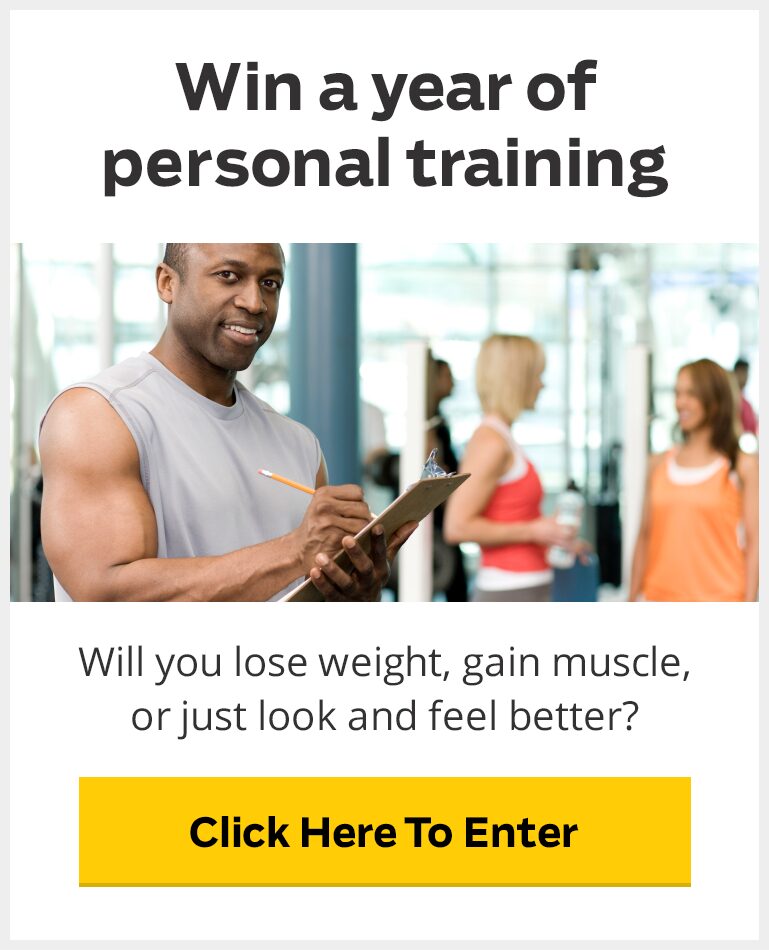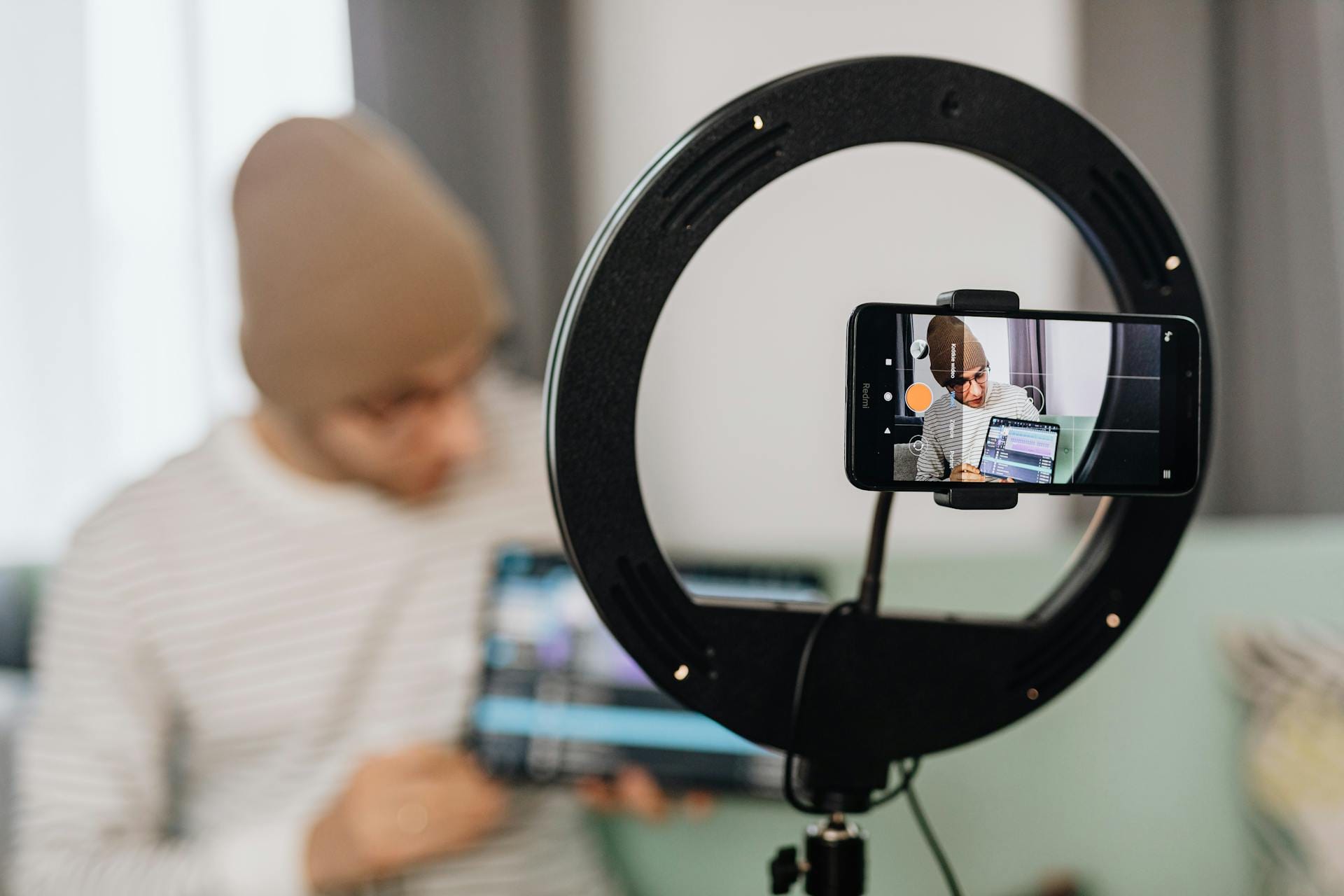
The Meetup Hack: How to get your first 1,000 subscribers
In 2015 I founded my first company: a job referral platform named Crowd — I thought there was no way it could fail.
Through extensive reading of industry papers and data, I knew large companies could save millions of dollars a year with the platform I wanted to develop. And whenever I talked about the idea with my friends and relatives, all I heard was “this is a genius idea!”
A year later, it… well… failed. Despite all the reading of “serious” industry papers on the subject, actual customers rejected my product for gazillions of problems I had never imagined. The worst part? I should’ve seen it coming.
So when I went back to the drawing board for business number two, I promised myself I wasn’t going to make the same mistake twice. This new business was around the idea of helping busy women slim down naturally through incorporating Asian-inspired food and nutrition hacks and wisdom into their everyday life. Why? I used Asian food to lose 50 pounds within a year. And after maintaining my weight for nine years, I knew I had something unique and valuable to offer to this highly competitive market.
But way before I started creating content and building my list, I made sure I had long conversations with my target customers to immerse myself in their dreams, hopes, fears, and pains. I didn’t want another repeat of Crowd.
My original goal was to speak to 20 people, but I ended up landing 53 customer interviews in three weeks. A few weeks later, one of them became my first paying client and paid me $500 for a four-week coaching program. I knew I had an actual business.
So how did I do it so quickly? Meetups.
This Meetup hack, in a nutshell, requires creating a group on Meetup.com relevant to your business so that you can talk to customers one-on-one. It has helped me generate real customer insights, which allowed me to validate my initial positioning (the Asian-inspired food and nutrition wisdom for natural slimming), create remarkable content, and build my first 1,000 email subscribers.
A well-curated event can be like your private focus group. No more blindly chasing after everyone!
Another bonus: Meetup is a multimillion-dollar technology platform that is optimized to promote your group to members that overlap with your matching audience. It’s FREE promotion that would have cost thousands of dollars on platforms of comparable sizes!
Using Meetup
This strategy takes careful planning.
Let’s be clear: the intention to use Meetup here is to interact with your audience for doing customer research, not selling your product/service. To earn your audience’s trust, you need to create events that are genuinely beneficial. For instance, if you are a career coach, hosting a career networking event is a sound idea. A promotion event for your one-on-one coaching package isn’t. After all, who would want to go to a sales event?
With this clear rule of thumb in mind, we can dive into the strategy now.
Step 1. Run simple, preliminary research to find a unique group idea
Before I started the Meetup group, two things were clear to me:
- The perfect audience for this group was busy women professionals who wanted to lose weight.
- I didn’t want to add another weight loss group to the already crowded weight loss community on Meetup. The competition is fierce, and I had no advantage as a beginner.
So I thought about something unique and fun that would grab my audience’s attention right away. What would it be? I turned to online women’s weight loss forums for help and asked the following question in a few of them:
“What would you like to learn the most about healthy weight loss?”
Within a day, I collected quite a few responses. A few people told me they wish they didn’t have to eat salad all the time. And that gave me the “A-Ha” moment I was waiting for — of course they’d like to eat delicious food!
Since my business idea was to help women lose weight through the Asian-inspired approach that involved very delicious Asian food, I had a perfectly matching group idea to validate this business idea: taking professional women to the best Asian restaurants in town to eat the slimming dishes that made them feel like cheating while losing weight. They could meet people and talk about weight loss openly with each other, but most importantly, they would get what they desired — the sizzling, scrumptious food that also had slimming power.
Besides that, there was one more reason that made me believe in this group idea: out of thousands of food groups on Meetup, none of them were focused on Asian food. That unique positioning was perfectly aligned with my business idea, which had a strong Asian element in it.
Step 2. Create an irresistible group name and description
With a unique and attractive group idea, the rest of the process can unfold smoothly and easily. Next up: write a compelling group name and description befitting of your idea.
Creating a compelling name:
Step 1. Write down your value proposition, the target audience, and their goals
My target audience was women professionals, and their goals were to lose weight. A very basic group name would have been something like “Delicious Asian Food For Women Professionals Who’d Like To Lose Weight.” This was lengthy and boring. But it was a good start.
Step 2. Fine tune the language
Make the basic title more impressive with high-impact words that generate an emotion. I remember seeing the words “slimming tea” have a high search volume on Google Keyword Planner, so I thought maybe “slimming” resonated to my audience more than “weight loss.”
With a little wordsmithing, I got a better version of the group name: “Delicious, Slimming Asian Food for Women Professionals.”
Step 3. Polish it with the “4-U” formula
With the basics done, I was ready to do some “advanced” work on the group name with the 4-U formula for writing high-converting headlines. The four “U’s” stand for unique, useful, urgent, and ultra-specific. The group name I had so far already felt “unique” and “useful,” but I wanted to make it more specific and urgent if possible. After playing with it for a bit, I got a new name: “Thursday Night Girl’s Hangouts Over Delicious, Slimming Asian Food.” And I went with it.
“Hangouts” made my group and events sound casual and interesting. And events were on Thursdays because it was easier for corporate women to hang out over dinner on that day of the week due to the relatively lighter workload. And I didn’t want to do Friday events because a lot of people had other plans for that day.
Let’s look at another example using the three steps:
Imagine you are a career coach who wants to create a professional networking event targeting high-income, experienced professionals of the banking, legal, and compliance industry. Your audience’s goal is to find a higher paying job in that industry.
Based on the information above, you may get a basic group name like “High-Paying Job Referral Networking For Legal and Compliance at Top Banks.” So far, nothing stands out. But a little wordsmithing can get you a better version of it, such as “Wall Street Job Referral Opportunities For Legal and Compliance Managers.” The word “manager” articulates not only the experience level of your target audience but also the quality of the job opportunities they should expect in your group.
Now, how would you rate this group name using the 4-U formula — is it unique, useful, urgent, and ultra-specific? You may agree with me that it lacks a bit of urgency, so you can add one word to it: “FAST Wall Street Referral Opportunities for Legal and Compliance Managers.”
Want to build a business that enables you to live YOUR Rich Life? Get my FREE guide on finding your first profitable idea.
Creating a compelling group description:
On Meetup, the group description is what people see when they click into your meetup group if they are interested. It’s what makes people join or leave.
A strong group description usually answers the following questions:
- The group’s purpose
- The ideal audience of the group
- Why people should join the group
But I want to show you something more advanced than that, which involves using qualifiers and filters to attract — and ONLY attract -— the people in your targeted niche.
THIS IS CRUCIAL.
If you are planning to sell a high-end product that costs $2,000 and is targeted at six-figure earners, talking to 20 people in the low-income range won’t be helpful. Even worse, information from the wrong audience can mislead you.
That’s why niche qualifiers and filters are extremely important. Let’s look at my group description first, then call out qualifiers one by one. Keep in mind that my target customer profile at that time featured 25-to-35–year–old ambitious, professional women who wanted to lose weight but were sick and tired of diet food. I targeted this demographic group as I’d been interacting with them day in and day out at work and in life and understood their mindset better compared to the other groups. And I envisioned them making $70K+/year because they needed to feel comfortable with investing in themselves.
Based on my group idea and the customer parameters above, I created the following group description:
Here are the qualifiers and filters I embedded in this copy:
First, “pathetic food life” in the first line: this was the number one burning pain my audience had when losing weight. In fact, this was also the language they used when describing their situation. So if someone shared that pain, this phrase (which is at the beginning of the description) could hook her within one second.
Second, the emphasis on Asian food: Asian-food wisdom was the positioning of my business and was therefore very important. If she loves Asian food, she’d be happy to lose weight on Asian food.
Third, the meal price: it works as an affordability filter. In the end, I wanted customers who were willing to pay for a good experience, not those expecting freebies.
Now, back to the career consulting example we had earlier. How would you apply the same ideas to writing a compelling group description in this case?
Before we try, let’s level-set on who the target audience is, what they want, and how you can help them. Remember the assumptions we made earlier are:
- TARGET AUDIENCE: experienced banking, legal, and compliance professionals who are actively job hunting
- WHAT THEY WANT: a higher paying job
- YOUR VALUE PROPOSITION: a professional networking group just for them
When you write the group description, each item above needs at least one qualifier to make sure you are attracting the right people. And here’s a group description I drafted following the idea:
“Are you an experienced MBA, JD, or LLM who deserves a higher paying job in this crowded Legal and Compliance job market of the Banking industry?
Would you like to meet with recruiters who have successfully placed people into job roles that pay 20% higher, and build relationships with current employees or hiring managers at the world’s top financial institutions?
If so, this is the place for you. I’m [NAME], an experienced career consultant in the banking, legal and compliance industry for X years. Every month, I’ll host a dinner meeting for professionals in this industry to meet with each other. This is exclusively for professionals with Y+ years of experience in the industry.
For your membership to be considered, I will need you to provide me your LinkedIn profile link.
Hope to meet with you at one of our future events!
[YOUR NAME]”
Besides answering basic questions such as what this group does, who should join, and why they should join, it contains the following qualifiers to make sure it’s only attracting the right people:
- First, words like “experienced MBA, JD, LLM” and “world’s top financial institutions” imply that this group is for one particular niche of people currently with and looking for high-paying jobs.
- Second, “Y+ years of experience” articulates the experience level you are looking for and filters out people in lower-level roles who haven’t gotten to the pay grid on their career ladder yet and don’t fit the service you provide.
- Third, words like “for your membership to be considered” and “LinkedIn profile” tell your audience this is a high-quality and serious group.
Step 3. Ask for a one-on-one interview
Now you’ve hosted your first event. Since people loved it and you’ve already built a relationship with them, asking for a one-on-one interview becomes easy.
Here’s an example of an outreach message I sent. When you draft yours, the key is to be concise, clear, and specific about how this person may help you.
A teardown of what I did in this message:
First of all, I knew Vanessa would be open even before I contacted her. We had a good chemistry during the event, and she really loved the restaurant I took her to.
Then I started the email with some genuine appreciation of her time with us, and I also showed curiosity about a book she mentioned — I listened to her closely, and I was genuinely intrigued by the knowledge she shared.
Most importantly, I was very honest and transparent with her about my goal and showed her I cared about her input. I think the authenticity played a huge role in her saying “YES!”
Step 4. Transform interviews into real insights that generate results
Up to now, you’ve had some interviews lining up. To simplify the communication process, I asked customers to schedule their meeting on a scheduling app (I used Calendly) so that we could avoid unnecessary back-and-forths on the logistics and move things fast.
Next, conduct the interview and make sure you get the REAL insights. Remember: If your customer isn’t emotionally engaged during the interview, it most likely isn’t going to help much because you hear no real insights or feelings from him.
What is it like when someone is emotionally engaged? Let me give you two quick examples: I remember during a two-hour interview with a customer, she told me this: “I’m from LA, everyone here is beautiful and skinny and whenever I go out with people, I feel like a toad.” During another interview, my customer told me: “I feel jealous about my husband’s tall, attractive female co-worker. I know it’s wrong, but I can’t help but feeling this way!”
They were sharing their deepest secrets with me — a stranger. That’s emotional engagement.
How did I forge such a strong connection? Let me tell you two things that helped.
First, I built trust with them at the beginning of the interview
Right before I dived into each interview, I told my customers that I fully respected their privacy and would keep them anonymous should I ever use insights shared by them in my writing.
Here’s the exact script I used:
“First of all, I want to thank you very much for joining me! And I want to promise you that this conversation is purely for the research purpose, we will talk about your personal weight loss stories, and I assure you that I will keep you anonymous if I ever need to use things we talked about in this conversation when producing content in the future.”
Even though your customers came into this conversation knowing you will protect their privacy, they will appreciate it if you make it clear to them because it shows you respect them.
Second, I unleashed the conversation with emotional triggers.
When someone joins your group, you can get a sense of who he is by reading his member profile. You can also require new joiners to answer a few basic questions during the onboarding process. Meetup takes you through these steps with very clear guidelines. Don’t underestimate the value of the basic information here because it can be a gold mine.
Let me share with you an example.
One of my customers I interviewed was a mother.
Our conversation went like this:
ME: You said in your profile that you’ve tried to lose weight for four years now. Can you tell me what that experience is like?
CUSTOMER: I did all the dieting you can imagine — low carb, intermittent fasting, etc., and I also eat only 1,200 calories a day. Sometimes I fall off the wagon, then I correct it by eating only 500 calories/day for 3 days. It’s yo-yo.
ME: How do you feel about it?
CUSTOMER: Not good because I starve myself a lot. But I know if I keep doing this, I will lose the weight, so I just continue.
ME: Do you think dieting is the only way to lose weight?
CUSTOMER: I never gave too much thought into it. I just do it. It seems nothing is wrong with it though.
The above conversation happened in the first five minutes of the interview, and you can see the customer has shown no emotional engagement so far, which could make this interview fail.
Watch how I turned the table with just one question.
ME: I see…. Honestly, I can’t tell you what’s right and what’s wrong because it’s up to you to decide for yourself. But maybe this question can help you see things more clearly: if years later, you find your daughter depriving herself for months and years to lose 15 pounds, what would you do?
(Five seconds of silence.)
CUSTOMER: I will tell her she’s wasting her life and do everything I can do to stop her. I’ve been missing out so much life because of this diet thing and for four years, I haven’t enjoyed a single meal with my family because of this guilt I have about eating. There’s no way I will want my daughter to do the same to herself!
That was the first emotionally charged answer I got from her. She not only spoke the words from her heart but also provided valuable hints for me to dig deeper into her mind.
ME: I agree with you. It seems that thinking about your daughter really helps you get a different perspective about dieting, which you may have never had before. I’m curious: you mentioned you’ve missed out so much life because of the diets. What do you mean?
CUSTOMER: Yes, I’ve been….
The conversation went deeper and deeper from here.
Do you see what happened? I listened to what she said and used her own words to describe what she was feeling.
The real, meaningful interview started this way.
When you do your interview, make sure you take very detailed notes, or ideally, record it. Direct words and stories from your customers can be used for many purposes in the future, including writing your website copy, creating content, and developing sales pitches, etc. Here’s the exact script I used when I asked customers for their permission to record the interview:
“Can I ask you a question? Would you mind if I record the conversation? I’m asking this because during our conversation, I want to give you my undivided attention and be present for you without being distracted by note-taking. Would you be okay with it?”
95% of them said “sure.”
Once the interviews were recorded, I went back to the recording, picked out the most emotional, unique, and compelling quotes they shared with me, and documented them in a master file.
I also sorted the quotes by categories of dreams, hopes, pains, and fears so that I could easily find what I needed and add them to my copywriting. ***
With insights I’ve collected from my customer interviews, I created some great content for my audience, including an ultimate guide that helped me gain 500 enthusiastic subscribers within three days. My email open rate ranges between 35-40%. And I’m still going back to the quotes whenever I create a new piece of content so that I can make my writing personable, compelling, and deeply resonant among my audience. At this moment, I just gathered my first 1,001 subscribers, and currently, I’m working on my first online product.
So far, I’ve shared with you the customer research methodology I followed and the bulletproof tips, techniques, and scripts I used around it. However, equally important with Meetup as a tool is a holistic, well-thought-out strategy. And never forget about the human aspect. Ultimately, you want to follow your audience into their secret inner world through connecting with them, earning their trust, and leading them to speak their mind so you can HELP them and make an impact.
Also, remember that gaining these skills will require some practice. I remember my first seven interviews totally sucked — there was no emotional engagement from people, I asked boring questions, and I even got tongue-tied a couple of times! However, once I learned from my mistakes, I saw dramatic improvement in the later interviews, and soon, I felt like a natural.



